Confused about whether you need fiberglass boat repair or gelcoat repair? Learn the key differences between the two, and how to fix your issue for good.
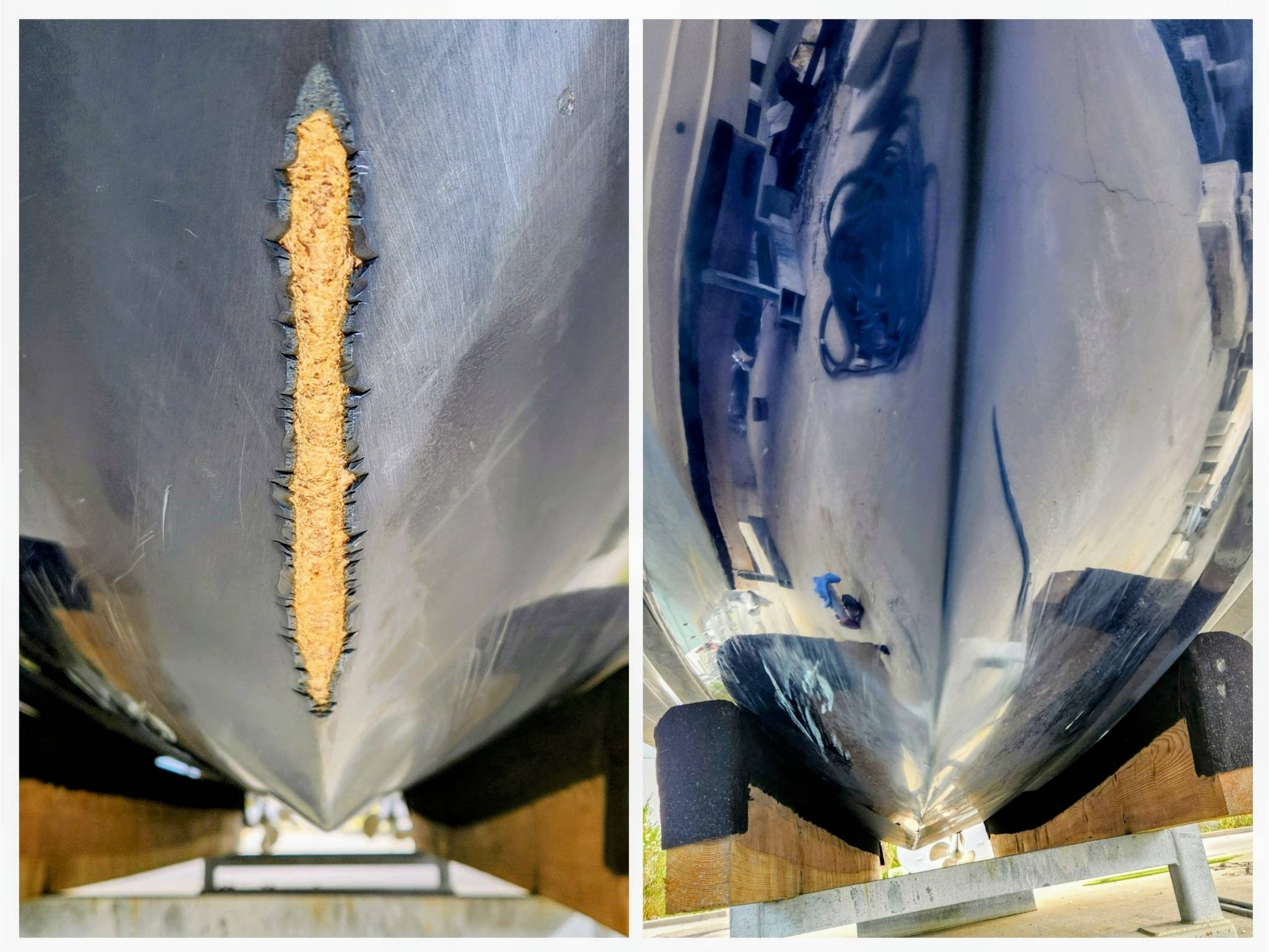
If you’ve noticed cracks, a gouge, a deep scratch, chips, or dull, chalky patches on your boat’s
surface, you may be wondering: Do I need fiberglass repair or gelcoat repair? These terms are
often used interchangeably but they refer to very different types of damage.
An easy way for you to understand this is to think of your boat’s surface as if it were a wall in
your house. The wall is usually made of drywall, a hard composite structure covered by paint
and underneath the drywall is the structural framing of the house. In this analogy, the drywall
represents your boat’s fiberglass which is supported by structural fiberglass like stringers and
bulkheads while the paint you put on your drywall represents the gelcoat that covers the
fiberglass.
Now, let’s pretend that you knocked a hole in the drywall while moving furniture, you wouldn’t
just paint over it. But many boat owners make that mistake when dealing with fiberglass
damage. Similarly, some only have gelcoat damage, which is much less invasive and they put
some material they bought off the shelf over it. In this article, we’ll help clarify this for you
because understanding the difference will help you better protect your boat’s structure,
appearance, and resale value.
At Total Boat Repair, we specialize in mobile fiberglass and gelcoat repair, detailing, and
upholstery services across Charleston, Hilton Head, Savannah, and Myrtle Beach. Here’s a
clear breakdown of each type of repair and how to know which one your boat needs.
A Little About Fiberglass and How Your Boat Is Designed
The fiberglass stringers are the structural backbone of your boat. Located beneath the floor or
deck, they run from the back (aft) to the front (bow). Another structural component, bulkheads,
run from left (port) to right (starboard) and intersect the stringers every few feet. Together, these
components keep your boat properly aligned—much like your spine supports your body.
The fiberglass hull and deck are connected to the stringers and bulkheads using "tabbing,"
which are smaller fiberglass braces. This creates a strong, unified structure. When a boat
suffers impact, there’s a risk of unseen damage to this internal framework. For example, the
tabbing could become detached, compromising the boat’s structural integrity—even if there’s no
visible damage on the exterior.
Keep in mind, this type of structural damage typically only occurs from high-speed impacts.
Minor bumps against a dock are not a cause for concern.
However, some boat owners who do have fiberglass damage choose a quick, cosmetic fix just
to get back on the water. Ignoring the real issue can lead to more extensive and expensive
repairs later on. That’s why Total Boat Repair doesn’t do "patc—we fix it right the first
time.
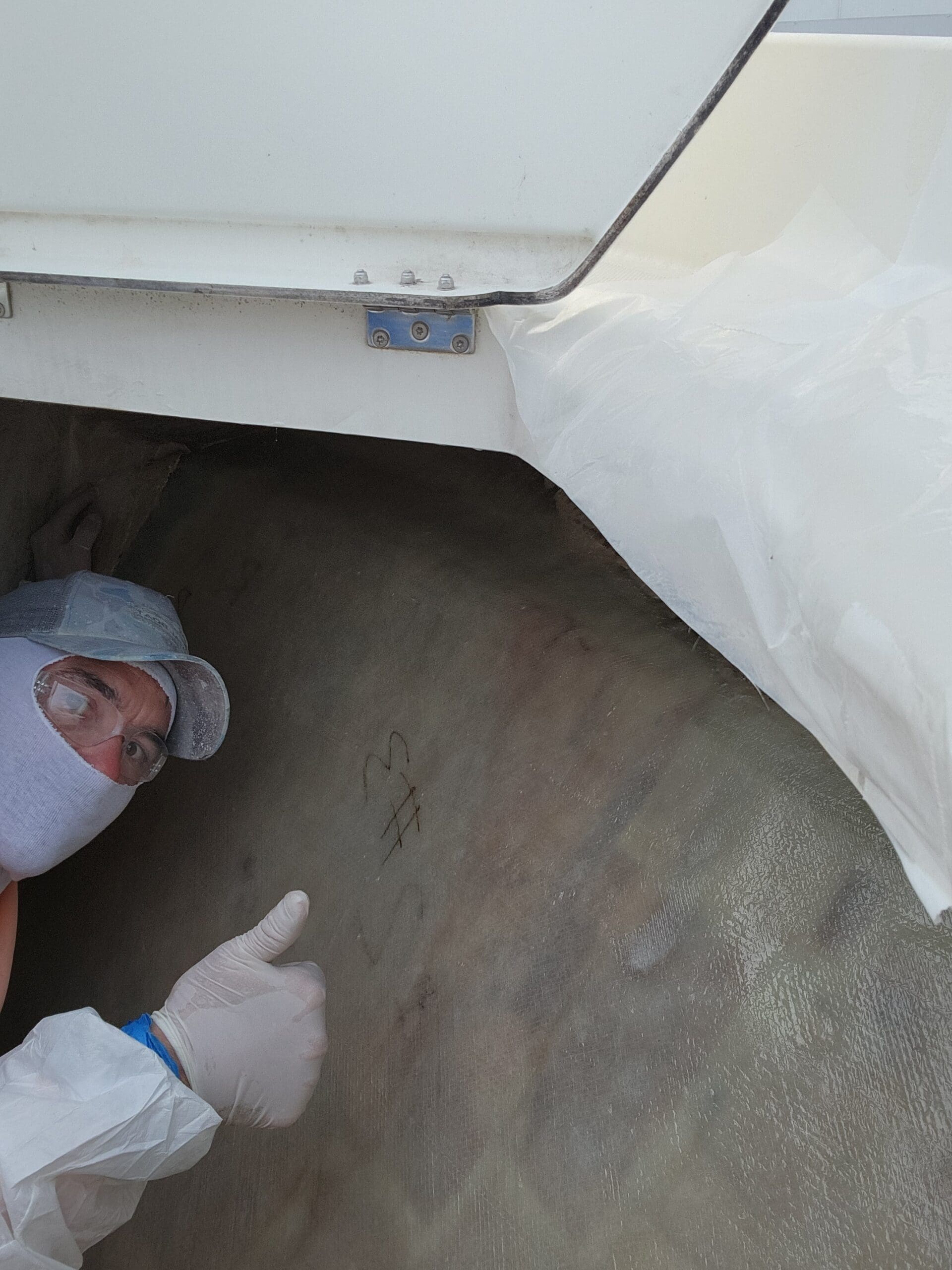
What Is Fiberglass Made Of?
Fiberglass is made of fine strands of sand and glass that are melted down and bound together
into fibers. These fibers are then layered to create a strong, rigid structure. The thicker and
longer the fibers, the more durable the final product.
Most boats use fiberglass cloth combined with resin. Common types of resin include:
● Polyester – The most commonly used due to low cost and easy application.
● Vinylester – Offers better water resistance.
● Epoxy – Strongest and most water-resistant, but more expensive and complex.

What Is Fiberglass Repair?
Fiberglass repair is needed when the hull or deck suffers from cracks, holes, gouges, or impact
damage. These issues can compromise the fiberglass layers, leading to delamination—where
layers separate and lose their strength.
The goal of fiberglass repair is to restore structural integrity. This involves:
● Removing damaged fiberglass and resin
● Grinding a taper into the surrounding area (a “scarf ratio”)
● Layering new fiberglass to bond seamlessly with the existing structure
This technique creates a solid repair with maximum strength and minimal filler.
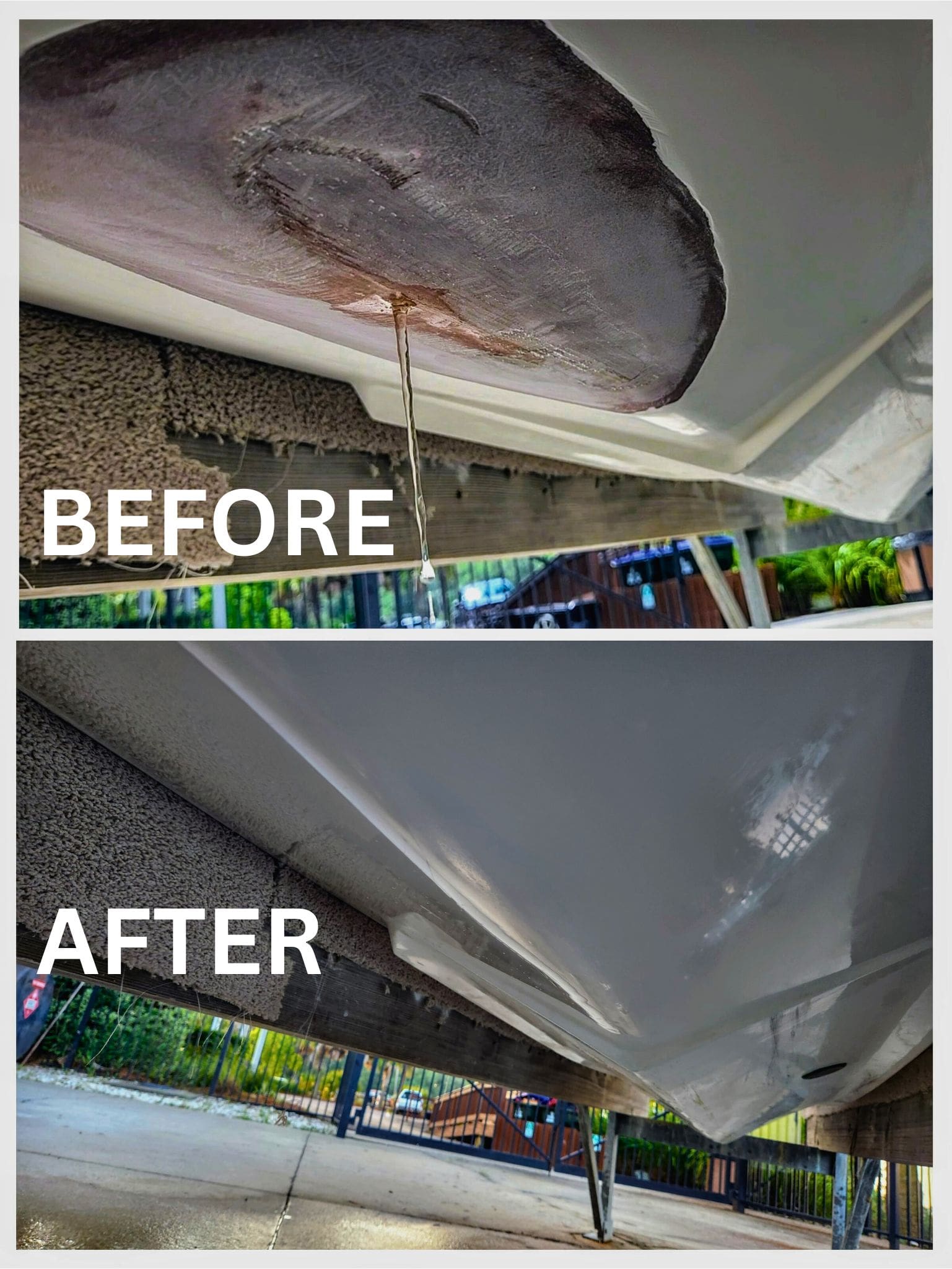
Photo of a fiberglass repair to the bottom of a boat hull
Common Signs You Need Fiberglass Repair
● Stress cracks spreading through the hull or deck
● Soft spots you can press with your hand or foot (caused by water intrusion) that has
soaked into your core material
● Visible fiberglass (typically red, green, or white fibers) from impact or trailer damage
Think of fiberglass repair as fixing the bones of your boat. Without it, surface-level fixes won’t
last.
What Is Gelcoat?
Gelcoat is a resin-based material, typically polyester, mixed with about 2% MEKP (methyl ethyl
ketone peroxide) to harden. Because it’s exothermic, it requires heat to cure—MEKP provides
that heat.
However, that’s not enough. Gelcoat also needs a wax additive to cure fully. Without wax, it may
harden but stay “gummy”—which makes sanding and finishing impossible. A proper cure results
in a powdery finish when sanded.
Alternative agents to assist in the curing process like styrene exist, but they can cause issues
such as “yellowing” or “pigment separation” over time. Proponents for using styrene argue that it
is already in gelcoat, while it’s a valid argument no one can argue that it will cause “yellowing”
over time and we want to create final and sure results so it’s best to steer clear. For best results,
it’s recommended to use a topical wax or paraffin solution.
The bottom line: Gelcoat must be sealed from air to cure properly.
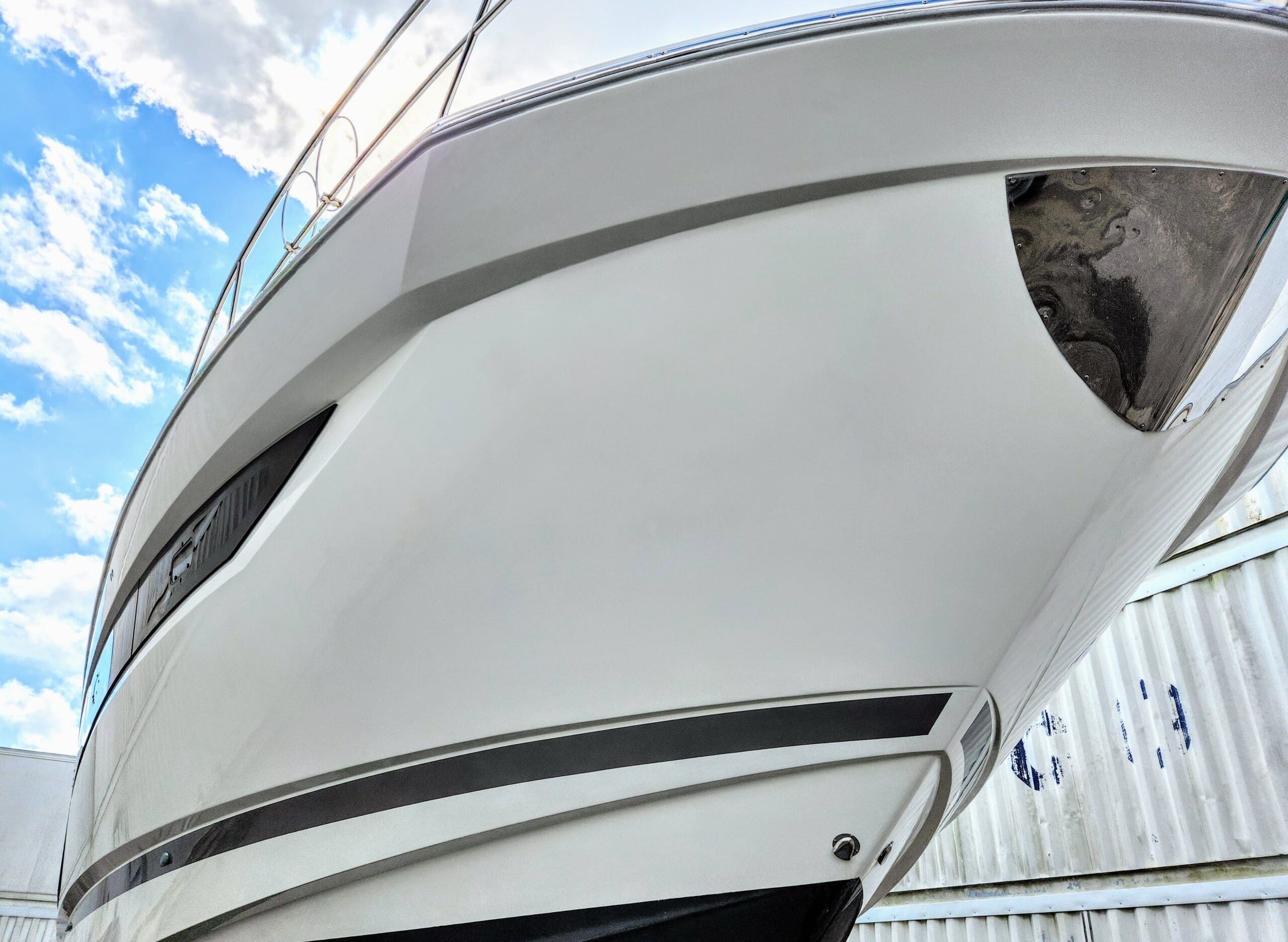
Photo of a yacht that has recently undergone a fiberglass hull repair
What Is Gelcoat Repair?
Most production boats (not custom-built) use gelcoat because it’s easy to apply in molds.
Gelcoat isn’t structural, but it protects your hull from UV rays, water intrusion, and general wear.
While gelcoat is durable, its thickness makes it prone to cracking under impact—similar to a
cracked windshield. Left untreated, cracks can spread and grow in their length which leads to
more expensive repairs.
Types of Gelcoat Damage
● Chips – Caused by sharp objects
● Scratches – From abrasive or sharp contact
● Gouges – From moderate impact with hard surfaces
● Cracks – Usually from impact that has challenged the fiberglass underneath or from the
boat flexing while underway
● Oxidation – UV damage causing chalky or faded surfaces
Common Signs You Need Gelcoat Repair
● Gouges that expose fiberglass
● Scratches or chips that reveal a darker color beneath
● Impact cracks with possible fiberglass damage underneath
● Spider cracks – fine lines resembling a spider web or windshield crack
● Stress cracks – often horizontal and found on the topcap (deck area)
Additional Signs of Gelcoat Degradation
● Loss of shine
● Chalky, faded color
● Visible discoloration or staining
Your boat’s gelcoat requires maintenance, most manufacturers recommend bi-annual waxing
because regular compounding and polishing can prevent oxidation and preserve the gelcoat’s
integrity.
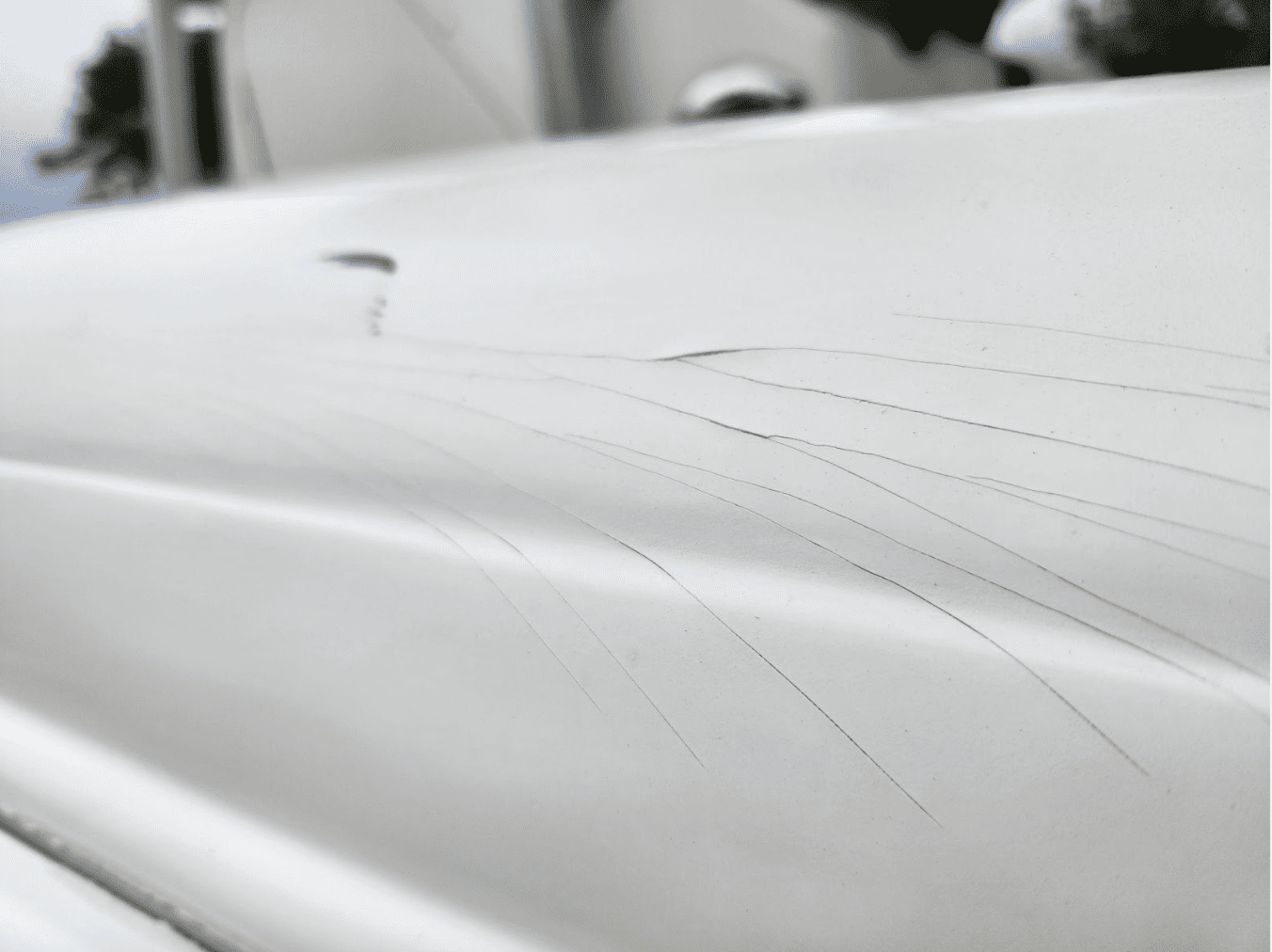
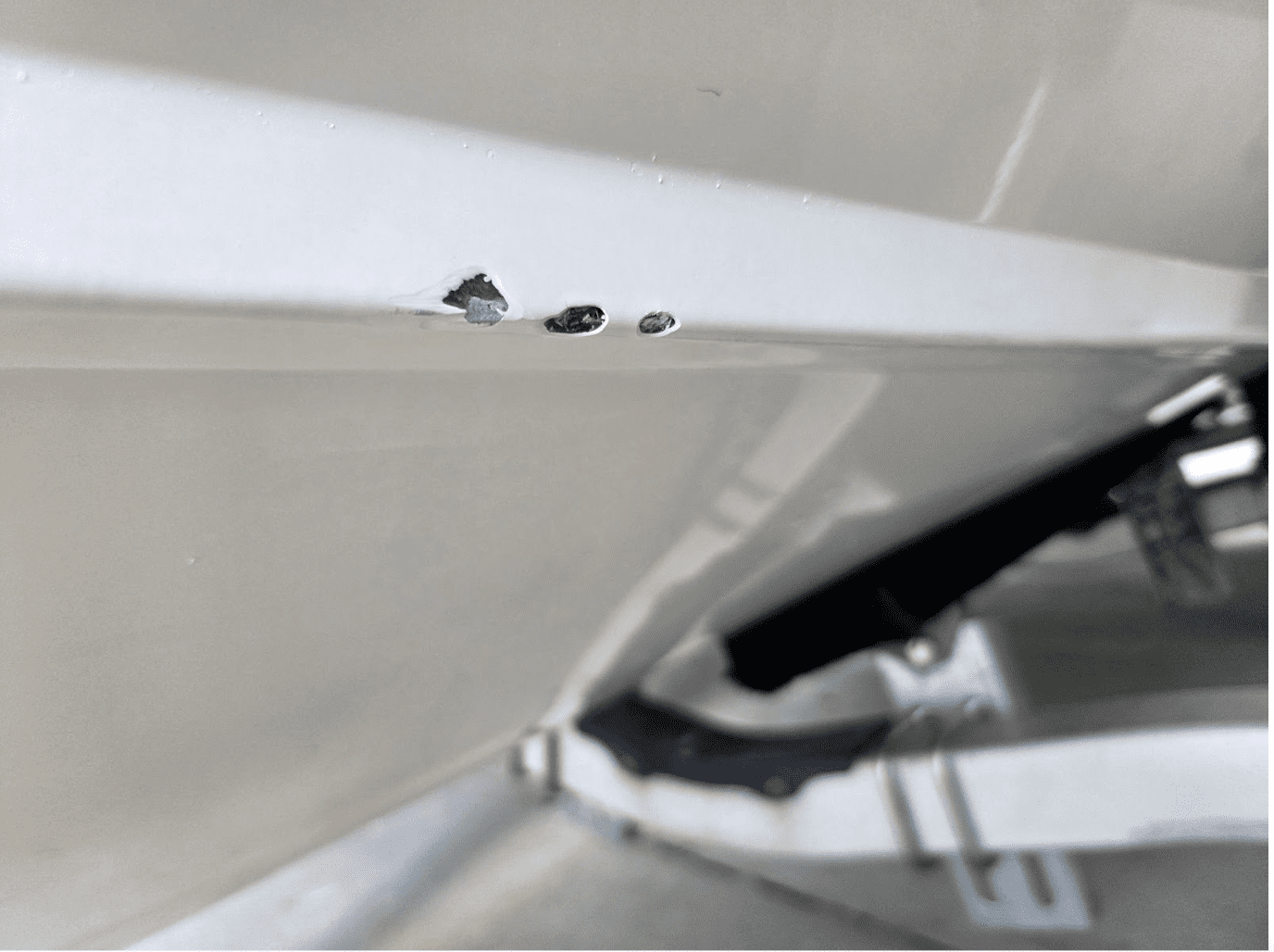
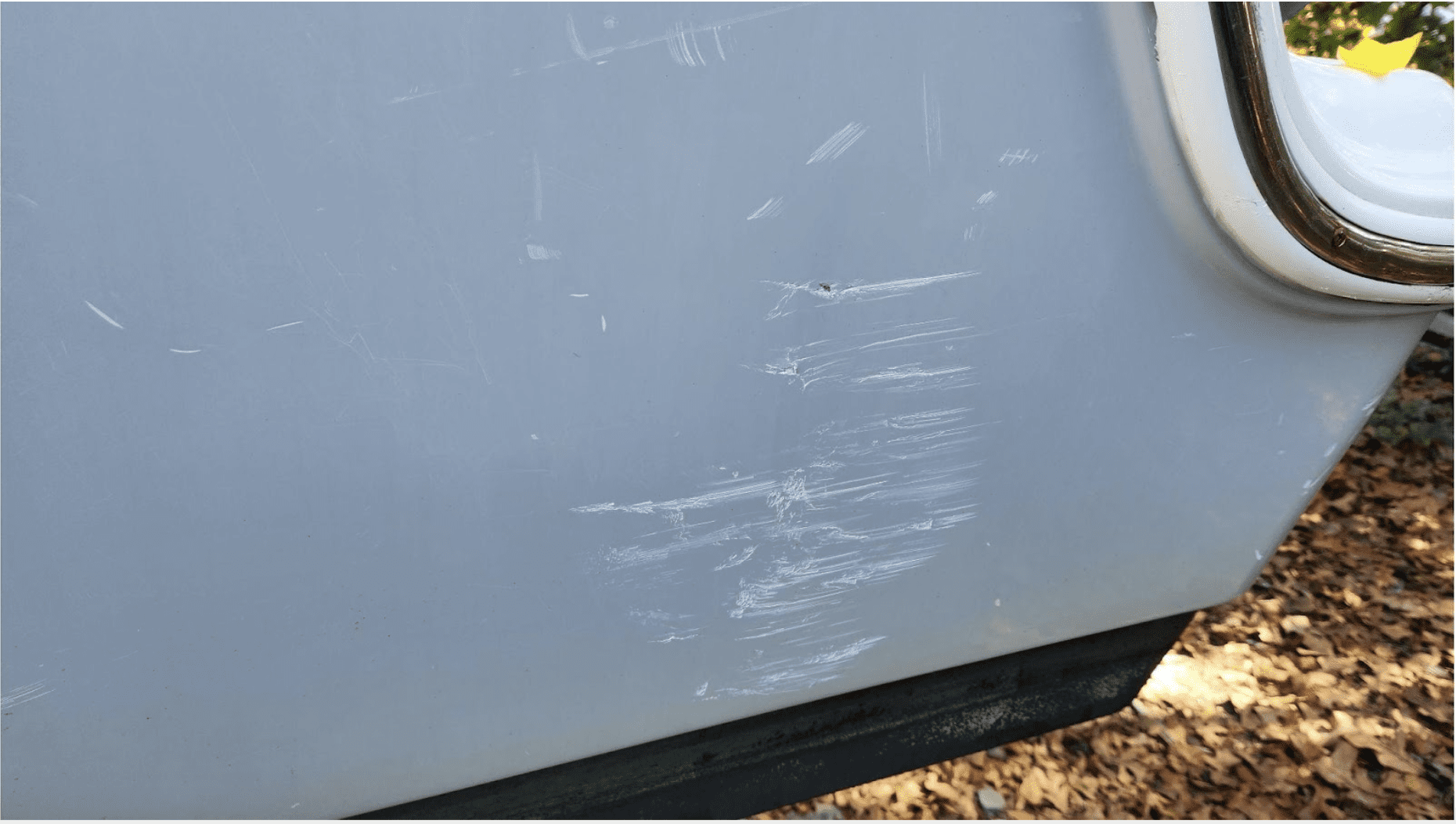
The top picture shows hairline cracks on the topcap of a boat that are stemming from an impact point located to the left (fiberglass repair), the second picture are some simple gouges (gelcoat repair), the last picture is some dock rash (gelcoat repair).
How to Tell Which Repair You Need
● Shallow scratches, fading, or chalky appearance? → Likely gelcoat correction
through boat detailing
● If you have chips or gouges and can see another color underneath other than the
color of your boat – Likely gelcoat repair
● Deep cracks, holes, or soft spots? → Likely fiberglass repair
In some cases boats need both, fiberglass for structure and gelcoat for cosmetic restoration.
Consult with a local professional if in doubt.
Why Professional Repair Matters
DIY kits may work for small scratches, but for long-lasting results, professional repair is key.
Improper fiberglass work can compromise your boat’s safety, and poor gelcoat fixes often peel
or fade.
A professional repair ensures your boat:
● Stays watertight and safe
● Maintains or increases resale value
● Looks polished and well-maintained
When to Combine Repairs with Other Services?
Many boat owners pair repairs with detailing or upholstery work for a full makeover. If you're
already fixing damage or restoring shine, it's a great time to refresh your interior.
At Total Boat Repair, we see the biggest resale improvements when clients combine:
● Fiberglass or gelcoat repair
● Full professional boat detailing
● Upholstery repair or replacement
This makes your boat look “like new”and helps it stand out in the Charleston and Hilton Head
markets.
FAQs
Is fiberglass repair more expensive than gelcoat repair?
Yes—fiberglass repair is structural and more labor-intensive. Gelcoat is usually less costly
because it’s a surface treatment.
How long does gelcoat last after repair?
With proper care and annual detailing, gelcoat repairs can last for many years.
Can detailing fix faded gelcoat?
Detailing can improve dull gelcoat, but if oxidation is severe, a gelcoat repair is necessary for
lasting results.
We Would Love To Hear From You
If you’re not sure whether your boat needs fiberglass repair, gelcoat repair, detailing, or
upholstery work—we can help.
We proudly serve Charleston, Hilton Head, and Savannah.
● Mobile service — we come to your marina or home
● Fiberglass, gelcoat, detailing, upholstery
Contact Total Boat Repair today to schedule your free estimate and get your boat back to
looking and performing its best.
